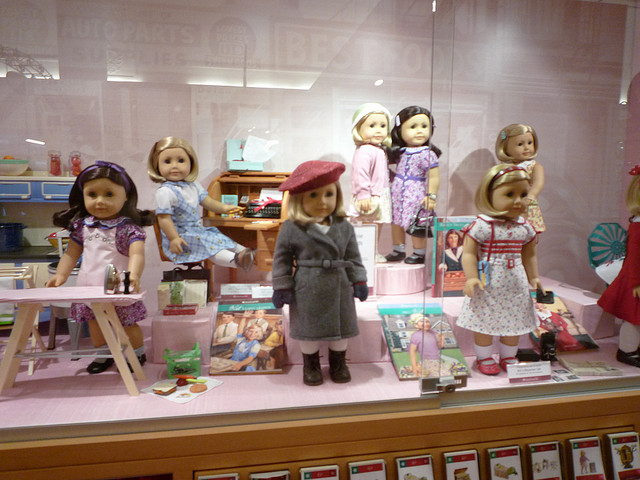Many parents are up in arms about the changes happening to the American Girl doll brand, specifically the shift from the focus on their “Historical Characters” to the “My American Girl” dolls that can be customized to look just like the buyer.
In her article, “American Girls Aren’t Radical Anymore,” Amy Schiller writes of the new “My American Girl” line, “With a greater focus on appearance, increasingly mild character development, and innocuous political topics, a former character-building toy has become more like a stylish accessory.”
The historical characters were girls that faced significant challenges like slavery, poverty, and the Great Depression. The story books that you could purchase along with the premium dolls served as windows into the past, and contained role models for young girls to learn how to behave when adversity strikes.
The Change Says More About Society Than The Brand
Before we are too critical of the American Girl brand for making this shallow switch, I think we should ask ourselves why they decided to make the change. Perhaps their team is part of an anti-feminist movement that wants to portray girls and women as weak. (Conspiracies, anyone??) Or maybe the creative talent and writers behind the books are running out of engaging material because it is relatively peaceful in the United States where they sell most of their dolls. (I could think of some stories! What about a girl from the inner city in Chicago faced with gang violence??)
To me, the more likely reason for the change is pretty clear. Their target audience wants dolls that can be customized into mini versions of themselves. If the historical dolls were still selling at high numbers, they would probably still be making them. But they aren’t, so they don’t. From a business perspective, the change is smart. Given the number of people that cram into their stores on a daily basis, it doesn’t seem like the educational aspect of this brand is a critical part of its appeal or identity anymore.
This says a lot less about the brand and a lot more about their target audience and our culture.
We seem to be much more egocentric and expect even our toys to be custom, just for ME. Rather than using the dolls and the associated stories as a learning experience as parents did in year’s past, the dolls have become just another really expensive form of entertainment. (Have you seen the price tag for one of these dolls?? I’d probably faint if I had to buy one.)
The American Girl Doll Store Experience
All of this aside, I think the team responsible for the American Girl stores are marketing geniuses.
Because I’ve been blessed with a 6 year old sister, I had the opportunity to visit the Chicago American Girl doll store a few months ago. I was very impressed by the experience they create for shoppers. They have mini stores within the store (almost like an indoor mall) where you can get your doll’s ears pierced, get matching t-shirts made, have your doll’s hair cut, and even a little cafe where you can share a cute little cookie or brownie with your doll.
They’ve really gotten into the heads of their consumer and taken so many tiny things into consideration. For example, what do you do with your doll if you have to use the washroom?
Why, a doll holder in every bathroom stall, of course! As long as you have a deep wallet, you and your doll will want for nothing in this store.
So right or wrong – the American Girl brand is doing what it has to do to keep its audience interested. If we want them to produce dolls with back stories that have more depth and meaning and help build character, we need parents to vote with their dollars to buy those types of products to demonstrate the demand is still there.
What do you think? Does this brand have any social responsibility to continue making the historical dolls if their target audience is no longer interested?

